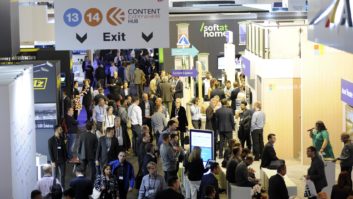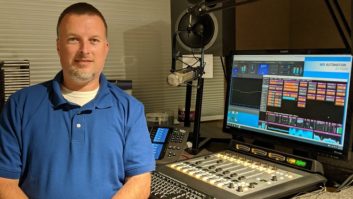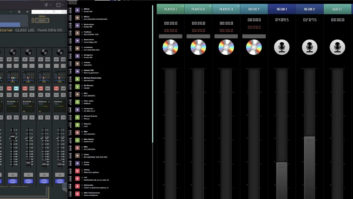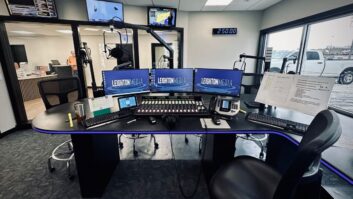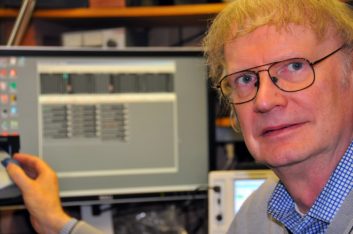 Robert Orban is a consultant to Orban Labs Inc. He has been developing audio processing algorithms and hardware for broadcast and studio use, including the Optimod line of broadcast processors, for more than 50 years. He holds over 20 U.S. patents.
Robert Orban is a consultant to Orban Labs Inc. He has been developing audio processing algorithms and hardware for broadcast and studio use, including the Optimod line of broadcast processors, for more than 50 years. He holds over 20 U.S. patents.
This is one in a series of interviews from the ebook “Trends in Audio Processing for Radio.”
Radio World: What’s the most important new development in design and use of processors for radio broadcasting?
Bob Orban: There are several possible answers. For some operations, virtualization of processing software has become significant, although putting processing software in the cloud is constrained by the need for reliable, high-quality audio connections with 100% availability. For other operations, compatibility with audio over IP connections and digital composite connections to the transmitter are more important. Others may value the ongoing refinement of processing algorithms that improve stations’ sound.
RW: How different are processing needs of analog broadcast, digital OTA, podcasts and streaming?
Orban: The processing for these transmission channels can be very similar except for the peak limiting technology.
For analog AM and FM, peak limiters must not pump or compromise loudness when faced with preemphasized signals, which implies clipping-like limiting with sophisticated distortion control.
For the other transmission channels, all of which include lossy codecs with no preemphasis, it is more important not to waste bits by encoding limiter-induced distortion spectrum, so limiters for these services should be very clean spectrally.
Additionally, some streamers may wish to use static file normalization to a target loudness instead of radio-style processing, although static normalization does not handle transitions and voiceovers nearly as well.
[Related: “How to Pick an On-Air Processor”]
RW: What is the impact of the cloud, virtualization and SaaS on the processing marketplace?
Orban: There is considerable interest in these concepts. However, moving the audio in and out of the cloud without dropouts, glitches and/or unacceptable latency is challenging.
Broadcasters must make a choice between the reliability and low latency of the current hardware processor infrastructure and the potential convenience of not having to own and maintain processing hardware. Orban offers products for both scenarios.
I find it interesting that there seems to be a backlash developing regarding putting everything in the cloud, with some players moving infrastructure requiring high performance back from the “cloud” to the “edge.”
RW: With audio coming from so many locations, what role do loudness and loudness range (LRA) play? Will future audio processors have monitoring capability for both on-air and streams?
Orban: As a member of the AES committee working on revising the AES TD1004.1.15-10 “Recommendation for Loudness of Audio Streaming and Network File Playback,” I am familiar with how industry experts in this area are thinking. We all agree that it is important to have consistent loudness between streams so that consumer can switch between streams without uncomfortable loudness jumps, and the ITU-R BS.1770 loudness measurement algorithm has been standardized for that purpose despite some limitations.
For example, its relative simplicity causes it to handle speech and music such that speech needs to be normalized about 3 LU below music for an esthetically pleasing balance between speech segments and music segments in a program.
As for LRA, its main values in the context of processing are, first, to help users assess if a single BS.1770 integrated loudness measurement corresponds well to perceived content loudness (high-LRA content will have parts whose short-term loudness is very different from its integrated loudness value), and second, to help users decide if dynamic range reduction for high-LRA content will provide a better listening experience to listeners in typical environments.
As for monitoring capability, most of Orban’s Optimod-FM processors and all of its streaming processors — Optimod 6200, 1101e, and 1600PCn — have had built-in BS.1770 loudness metering for several years, and some also include the CBS loudness measuring algorithm, which uses a more sophisticated psychoacoustic model than BS.1770. Additionally, Optimod-TV 8685 provides loudness measurement and automatic logging. No Orban processor displays LRA, but our free loudness meter software for Windows and MacOS (http://orban.com/meter) does this and more, and also allows logging and file analysis.
RW: Has processing attained a state of “hypercompression” from which there has been little change in how loud one can make over-the-air audio?
Orban: I agree that this is true for FM processing, and most improvements in FM processing are refinements. However, our new XPN-AM incorporates our MX limiter technology for the first time in an Orban AM processor, and this has enabled as much as 2 dB of increased modulation density for a given perceived distortion level compared to previous Orban AM processors. This provides meaningfully improved ability to increase coverage, to reduce power bills when using AM transmitters with dynamic carrier control technology, or to split the difference.
Given the ever-increasing amount of noise in the AM band and the financial challenges of maintaining an AM operation, we feel that XPN-AM processing helps support the economic viability of the AM service.
For both AM or FM, more sophisticated processing algorithms enable higher levels of perceived quality for a given loudness level, and these advantages remain if broadcasters choose to back off average modulation levels to improve quality.
RW: We read the processing can mitigate FM stereo multipath distortion and reduce clipping distortion in source content. How can buyers evaluate these claims, and could the industry develop third-party psychoacoustic testing to learn how listeners rate these features?
Orban: Orban backs up its claims in this area with white papers and conference presentations that show objective measurements supporting our claims. Several of our product manuals include the white paper “Measuring the Improvements in Optimod-FM xxxx’s FM Peak Limiting Technology,” and I have been doing presentations at local SBE chapter meetings that include measurements showing how our “Multipath Mitigator” phase corrector reduces the peak and average L–R stereo subchannel modulation. This reduces multipath distortion because it is well-established that the stereo subchannel is much more vulnerable to multipath distortion than the stereo main channel.
While it is of course possible to do third-party scientific testing that further backs up these claims, we believe that each station’s situation is unique, particularly regarding its multipath environment, and that the most significant testing is on-air testing at a given station’s own facility. Our processors offer the user the ability to turn the improved algorithms on and off, so it is easy to do comparison testing.





